NOT LOSING FAT? 20 CUTTING DIET MISTAKES TO AVOID
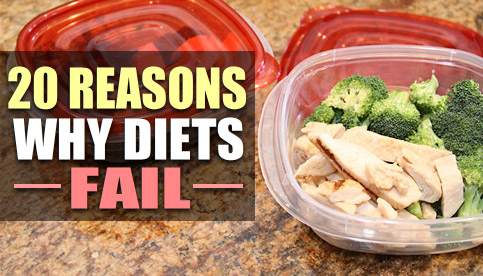
“Mainstream” fitness advice is full of nonsense and misleading information.
Despite clear ongoing advancements in the field of nutritional science, the majority of fat loss hopefuls out there continue to repeat the same basic mistakes over and over again. Mistakes that unnecessarily over-complicate their diet, negatively impact their progress, and make it far more difficult to achieve the results they’re after.
It’s no wonder why 90% or more of people who begin a cutting phase end up falling off course in the long run and never achieve the physique they truly desire.
If you find that you’re not losing fat despite all the effort you’re putting forth in the gym and in the kitchen, there’s a virtual guarantee that you’re making at least one or more of the following critical cutting diet mistakes…
20 Cutting Diet Mistakes To Avoid
#1 – Your Daily Calorie Intake Is Set Too High.
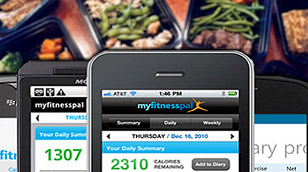
This is the single most basic, foundational cutting diet mistake you can make.
If you want to lose fat consistently, then you need to maintain a calorie deficit over time by burning more calories than you consume.
If your daily calorie intake is set too high from the outset, nothing else that you do in your program is going to make any difference at all.
A good guideline for most people is to start out by eating about 500 calories below their maintenance level, which is the number of calories you require daily in order to maintain your current weight.
This amount is large enough to stimulate significant ongoing fat loss, but small enough to keep your appetite under control, maintain your energy levels and mental focus, and keep your training performance elevated.
Make no mistake about it – calories absolutely do matter, and your total net energy balance in the big picture is by far the most important factor in your entire cutting phase.
(You can use my Free Macronutrient Calculator to get an estimated caloric starting point if you’re still a beginner)
#2 – You’re Over-Eating Without Realizing It.
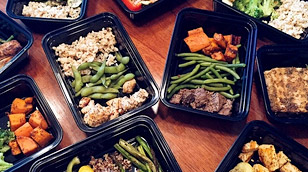
Your daily calorie target may be set at the proper level, but there’s also the possibility that you’re actually going over it without realizing it.
This is extremely common, and studies have clearly shown that most average fat loss dieters will consistently under-report their true calorie intake when left to their own devices, and often by a significant margin.
This can happen for many different reasons, such as:
- Errors with your food measurements that are adding up throughout the day.
- Going overboard on cheat meals/cheat days.
- Little snacks and other “hidden items” that are sneaking into your diet without being accounted for.
Or, it could just be that you aren’t tracking your fat loss diet closely in the first place and are instead trying to estimate things, but you aren’t doing it accurately.
#3 – Your Calorie Intake Is Set Too Low.
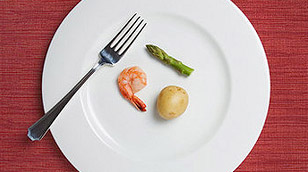
This is the opposite of the first two cutting diet mistakes and typically happens when people try to rush the process using a “crash diet” in an attempt to drop the fat as quickly as possible.
More aggressive calorie deficits can work fine for some people over the short term when done correctly, but for the average person, going too low is rarely a good idea.
Reduce your calories too far and your appetite will shoot through the roof, you won’t feel good both physically and mentally, your training performance will suffer, and more likely than not, you’ll eventually quit and rebound in the other direction.
#4 – You Aren’t Eating Enough Protein.
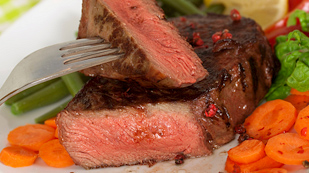
Not only is protein critical for maintaining lean mass during a cutting phase, but it’s also the most filling of the 3 major macronutrients.
For most average dieters, somewhere between 0.8-1 gram of protein per pound of body weight daily is a good guideline in order to keep your appetite controlled throughout the day.
#5 – You Aren’t Eating Enough Fat.
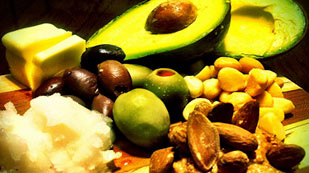
A lot of people make the mistake of thinking that “eating fat makes you fat” and end up dropping their fat intake to excessively low levels as a result.
In reality, all a “low fat diet” is going to do is crash your testosterone levels, impair brain function, decrease your mood, and possibly even increase levels of depression and anxiety in those who are prone to it.
In order to prevent these negative effects to your overall health and hormone levels, aim to get around 25% of your total calories from fat, with 20% being the minimum.
Fats contain 9 calories per gram, so simply multiply your daily calorie intake by 0.25 and then divide by 9 to get the total grams of fat you should be eating.
Remember: dietary fat does not make you fat – excessive total calories do.
#6 – You Aren’t Eating Enough Carbs.
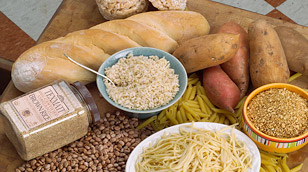
Maybe you are getting enough protein and fat, but you’ve decided to cut your carbohydrate intake way down instead.
Low carb diets can be effective in some situations depending on one’s individual body type, but unless you have a very specific reason for doing it, I wouldn’t recommend just aimlessly cutting out carbs from your diet.
Doing so will usually cause your appetite to increase, your training performance to drop, and similar to low fat diets, you’ll end up feeling moody, irritable and unable to properly concentrate throughout the day.
As a starting point for your cutting diet, go with the previously recommended figures of 0.8-1 gram of protein per pound of body weight daily, get 25% of your total calories from fat, and then fill in the remaining calories with carbohydrates.
In order to calculate this, just keep in mind that proteins contain 4 calories per gram, fats contain 9 calories per gram, and carbohydrates contain 4 calories per gram.
You can also use my Free Macronutrient Calculator to automate the process for yourself.
#7 – Your Daily Meal Structure Is Not Suited To Your Appetite.
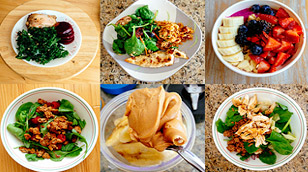
Optimal meal frequency is a highly individual thing, and different people will feel physically better and be more likely to stick to their cutting diet based on different patterns of eating.
Given that meal frequency itself is not going to impact your bottom line fat burning results as long as the total calories for the day remain the same, you’ll be best off to take some time to experiment and see what works best for you in terms of meal size and meal spacing.
It could mean 6 small meals spaced every 2-3 hours apart… 2 big meals eaten using an intermittent-fasting style approach… or it might mean 4 medium-sized meals somewhere in the middle.
Just figure out your overall calorie and macronutrient needs for the day as a whole, and then distribute them in whatever way maximizes the chances that you’ll actually stick to it over the long term.
#8 – Your Daily Food Choices Are Not Suited To Your Preferences.
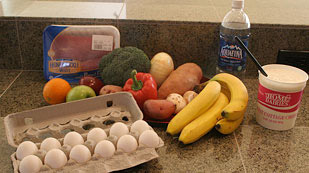
Many trainees fall into the trap of thinking that certain foods are somehow mandatory to include in their fat loss diet, and they end up choking them down on a daily basis even though they don’t enjoy the taste.
This is totally unnecessary, counter-productive and greatly increases the chances that you won’t stick to your cutting meal plan long term.
Remember… your body does NOT view your diet in the context of individual food items.
It only sees the big picture: the total calories, protein, carbs, fats, vitamins, minerals, fiber and other micronutrients, and there are a virtually infinite number of different ways that you can reach these totals for yourself.
For example, if you prefer turkey and salmon to chicken and beef, use those as your main protein sources.
If you particularly enjoy blueberries and bananas as opposed to apples and strawberries, use those as your primary fruit sources.
If you’d rather have sweet potato in place of rice or oatmeal in place of bread for your carb sources, go that route.
If you simply take some time to plan out your nutritional approach around the foods that you prefer most for each major category (proteins, carbohydrates and fats), your cutting diet will be far more enjoyable and your chances of long term success will be significantly increased.
#9 – Your Calorie To Food Volume Ratio Is Out Of Balance.

If you’re maintaining a calorie deficit over time in order to lose fat, you’re going to feel a certain degree of hunger at different points in the day. This is totally normal and is to be expected.
Although you can’t completely eliminate this hunger response altogether, what you can do is take steps to minimize it as much as possible by consuming foods that are low in calorie content relative to their volume.
If you’re loading up on calorie dense items like nuts, seeds, dried fruits, fruit juices, fatty cuts of meat and higher calorie snacks and smoothies, you’re going to be taking in a lot of calories in exchange for only a small amount of actual food.
On the other hand, if you base your diet around less calorie dense foods like vegetables, fruits, lean proteins, whole grains etc. you’ll be able to eat a lot more actual food and fill yourself up while still keeping the calories under control.
#10 – You’re Forcing Yourself To “Eat Clean” 24/7.
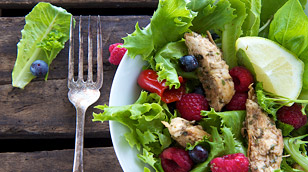
Yes, the majority of your cutting diet should always be based around nutrient dense, minimally processed whole foods, but that doesn’t mean you have to choke down plain chicken breast, brown rice and steamed broccoli all day long, and it doesn’t mean that “clean foods” are the only thing you’re allowed to eat.
As long as the bulk of your meal plan is coming from clean, healthy foods, you can go ahead and fill in around 10-20% of your overall calories with your favorite “treat foods” as long as you track them as part of your total intake.
Doing so will not negatively impact your actual fat burning results in any measurable way, but it will make your diet more enjoyable and will prevent you from feeling deprived and overly restricted throughout your cutting phase.
#11 – You’re Going Overboard On Cheat Meals And Cheat Days.
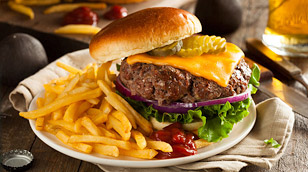
This one is the opposite of the previous mistake and happens when a dieter believes that since they’ve “eaten clean” for a certain period of time, it’s now okay to just go “all out” and eat whatever they want without any worries.
While cheat meals are totally fine to include in your cutting plan in controlled amounts, don’t make the mistake of thinking that they’re somehow “free calories” that magically don’t count.
Fat loss is ultimately a game of your total energy intake versus your total energy expenditure in the overall picture, and all those extra calories can very easily add up and hugely offset the deficit you created over the previous few days or week if you aren’t careful.
Everything you eat throughout a given week counts toward your nutritional totals, and it’s the average deficit you maintain over the course of that period that will determine your bottom line results.
#12 – You’re Following Extreme, Overly Restrictive Dietary Rules.
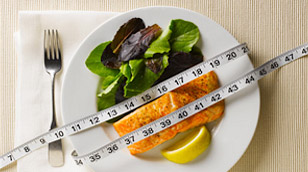
Any “fad diet” approach that heavily restricts certain macronutrients, eliminates entire food groups, or that overly emphasizes the little details such as meal frequency or food timing will almost never be sustainable in the long run.
You might be able to stick to it for a few weeks or possibly even a few months, but chances are that you’ll eventually burn out and quit.
Proper fat burning nutrition is very straightforward when it all comes down to it, and there’s no need to unnecessarily over-complicate your eating plan as that will only create additional work and mental stress for yourself that you don’t need.
#13 – You Aren’t Adjusting Your Calorie Intake As You Get Leaner.
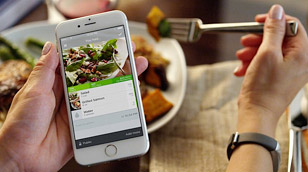
The calorie intake that you begin your cutting phase at isn’t necessarily going to be the calorie intake that you end off at, and as you continue getting leaner and leaner you’ll likely need to adjust your calories downward to keep the results coming.
If your fat loss has clearly stalled out for a 1-2 week period, you can either add slightly more cardio to your program or decrease your daily intake by 100-150 calories.
#14 – You Aren’t Taking Any Refeed Days.
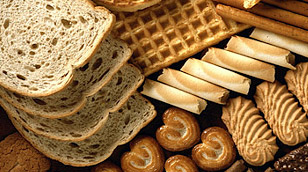
Refeed days typically won’t be necessary in the earlier stages of a cutting phase, but as you become increasingly leaner they can be a useful tool to give you a slight break from your diet and provide a small physical and mental boost.
To implement a refeed day, just schedule one day out of the week where you eat at your calorie maintenance level, and get the majority of the increase from carbohydrates.
Refeeds will give you something to look forward to during the week and can be helpful for improving overall long term dietary adherence.
#15 – You’re Not Drinking Enough Water.
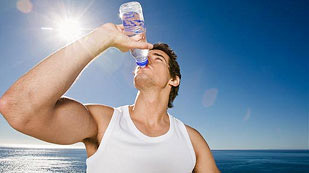
A smaller point here, but staying properly hydrated will help to further control your appetite, improve how you feel both physically and mentally, and keep your training performance elevated as well.
There’s no exact daily guideline for water intake since it can vary so much from person to person, but a good general approach is to drink enough water so that your urine stays on the clearer side throughout most of the day.
#16 – You’re Putting Too Much Emphasis On Supplements.
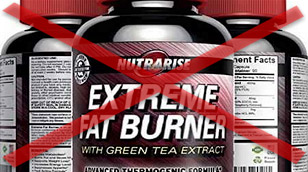
Any fat burning supplements you’re using as part of your cutting diet are only going to have a very minor impact on your results at best, and the overwhelming majority of your progress will always be decided by proper training and proper nutrition.
Don’t make the mistake of thinking that supplements can somehow make up for poor eating habits, and don’t put too much stock in them or try to rely on them for results.
There’s nothing wrong with including a few basic supplements in your plan as the “icing on the cake”, but even a properly structured supplementation plan is still only going to deliver a few percent of extra results over the long term.
#17 – You’re Not Getting Adequate Sleep Each Night.
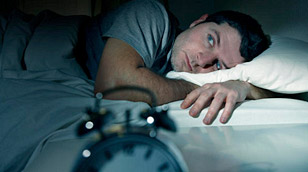
While this isn’t a direct “cutting diet mistake” in and of itself, improper sleep can throw your eating plan off track due to the effect it will have on your appetite.
Fail to get an adequate rest each night and you’ll end up with elevated levels of the hormone grehlin as well as a decrease in the hormone leptin, both of which play a key role in regulating your hunger levels.
In order to improve the chances that you’ll be able to stick to your cutting meal plan consistently without over-eating, you’ll want to make sure you’re getting enough high quality sleep each night to keep these hormones in the proper balance.
#18 – You’re Not Being Patient Enough.
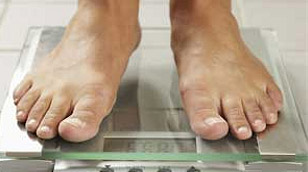
If you really want to get lean and significantly transform your body, there’s no way around the basic fact that the process requires time and patience.
One of the biggest cutting diet mistakes you can make that will cause you to lose motivation and fall off track is expecting too much too soon.
A standard rate of fat loss for most average trainees is going to be between 1-2 pounds per week (those on the more overweight side can lose fat a bit faster than this), and you’re most definitely not going to end up with a defined six pack over night.
If you’re truly serious about getting into great shape then you have to be willing to put in the consistent work week after week and trust in the long-term process.
Fat loss is a game of consistent singles rather than homeruns, and maintaining proper patience is absolutely key to your success.
#19 – You’re Comparing Yourself To The Wrong People.
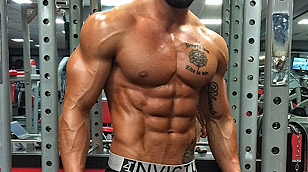
Keep in mind that those “perfect physiques” you see in magazines and on social media represent the absolute best of the best in terms of genetics, and many of those people are not even natural athletes to begin with and are actually using steroids and other drugs to enhance their results.
In addition to this, most of the popular pictures you see have been specifically prepared for and are taken under the perfect conditions (lighting, angles, getting a pump first, oils etc.) and often aren’t even “real” to begin with since they’ve been touched up or even blatantly photoshopped.
Having an ultimate goal in mind for motivational purposes is fine, but it can also have the opposite effect and lead to discouragement if you’re constantly comparing your own physique to something that is very often a fantasy.
If you’re going to compare yourself to others, then at least be realistic and make sure to also do it with the general every day population as a whole.
In reality, simply being somewhere around 12-14% body fat with some reasonable muscular development already puts you in far better shape than the vast, vast majority of people out there.
#20 – You’re Expecting Things To Go Perfectly.
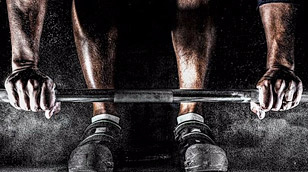
Regardless of how carefully you’ve planned things out or how disciplined you might be, you’re still inevitably going to have days where things go off course.
You will go over on your calories sometimes, you will give in to temptation sometimes, and you will feel highs and lows with your motivation levels.
This is all part of the process and is completely normal.
If you’re expecting things to be perfectly smooth all the way through and feel overly discouraged by a few simple mistakes here and there, you’ll be far more likely to fall seriously off track when those bumps in the road do show up.
Always remember that fat loss is all about what you do in the big picture, and your progress is NOT going to be perfectly linear no matter what.
You will make mistakes, and you must learn to brush them off, take it in stride, and continue on with your plan regardless.
If you found these 20 cutting diet mistakes helpful, make sure to get your personalized training, nutrition and supplement plans using my free interactive video presentation below…
If you found this article helpful, make sure to sign up for your FREE custom fitness plan below...




